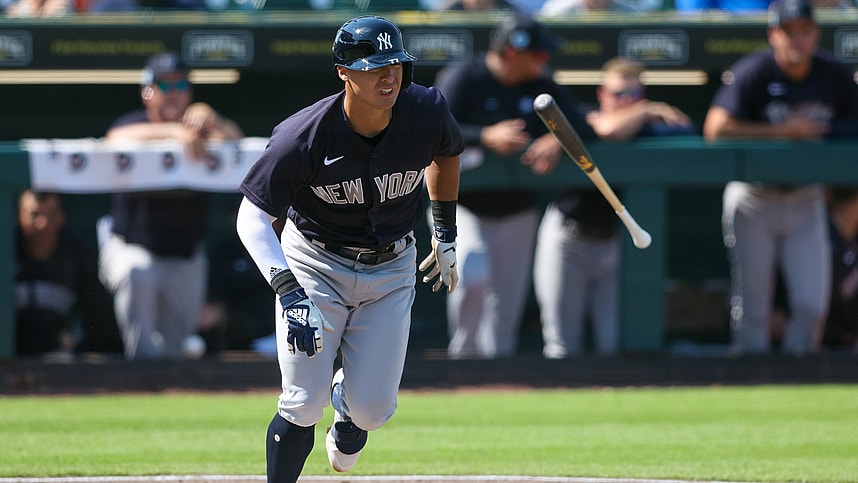
The Yankees have been left with one of the most difficult decisions they’ve had to make regarding their Opening Day roster in quite some time. It seemed like you could pencil in top prospect Anthony Volpe at Triple-A with Scranton, as it would take a ridiculously good Spring to give him any shot at the Major League roster. While Spring Training is far from over, Volpe’s done just that, and he’s put himself in a position where there’s a genuine conversation to be had about whether he should make the Opening Day roster. There’s a lot that goes into a decision like this, and while it’s a good problem to have, it’s certainly a tough call.
- Yankees News & Buzz: Yanks running out of time but still have options; Tatsuya Imai dream might be fading, more
- Luke Weaver bids farewell to Yankees fans with heartfelt letter
- The Yankees are short on time, but not short on options
The Case For Starting Anthony Volpe Right Away
If there’s one thing the Yankees sorely need in their lineup, it’s a consistent leadoff hitter. When we evaluate the skills Anthony Volpe has, his swing decisions and hit tool definitely stand out. Between Double-A and Triple-A, Volpe struck out just 19.8% of the time, all while walking 10.9% of the time and posting a .342 OBP. There’s not a lot of swing-and-miss in Volpe’s game, and he knows how to get himself on base as well. He’s a profile of hitter that the Yankees have needed desperately in front of their fearsome trio of power hitters in Judge-Rizzo-Stanton, and if Volpe’s bat is legit, it deepens their lineup a lot.
Volpe also has blistering speed that makes him an ever-present threat on the basepaths, swiping 50 bases and being caught just seven times. As a leadoff hitter, Volpe would give the Yankees a player who can reach base often, create a distraction for pitchers as they face the heart of the lineup, and on top of that also provide more power to this lineup. Volpe clubbed 21 HRs in just 132 games last season, hitting 27 the year prior. The Yankees love hitters who can generate loft in their swing, and he’s no exception to this. His opposite-field power can certainly catch people by surprise as well, especially considering his smaller frame and statue.
With that said, arguably the best part of Anthony Volpe’s offensive profile is his ability to pull the ball in the air. To get the most out of your barrels, you have to pull them in the air since pulled flyballs carry and travel better than their opposite-field or dead-center counterparts. Volpe’s raw power isn’t generational or anything of the sort, so he needs to pull the ball to get the most out of the well-struck balls he does have. Pulling the ball typically requires earlier swing decisions, which increases your chase rate and thus causes more strikeouts, but Volpe’s been able to maintain a low K-rate in spite of this approach.
Not only has he maintained a low-K rate and high-BB rate, but he’s done so at an extremely sustainable rate. Anthony Volpe has seen 67 pitches out of the strike zone, and yet he’s only swung at seven of them (10.4% Chase Rate), which is ridiculous. He’s doing this by the way with those aforementioned early swing decisions that typically create overly aggressive hitters and high strikeout totals.
If there’s a comparison for a middle infielder with a skillset like Volpe’s it would be Texas Rangers’ 2B Marcus Semien. Similarly to Volpe, he doesn’t have elite raw power, and yet he’s someone you’d expect to club over 20 HRs a season. Semien relies on frequent elevation, a strong hit tool, and of course pulled flyballs to put up strong numbers at the plate. Last season was a down year for Semien with just a 107 wRC+, but his defense at 2B and elite baserunning allowed him to post 4.2 fWAR, the 36th-best mark among position players last season.
He was even better according to Baseball Reference’s version of WAR (rWAR), posting a 5.7 WAR, the 16th-best mark among position players last season. A 107 wRC+ is supposed to be pedestrian, but because he’s so good at the other two aspects of the game, he’s an extremely valuable player who has a high floor and a high ceiling as well. I want to be clear that I’m comparing Volpe to Semien’s 2022 season since a 107 wRC+ seems far more realistic for a rookie than the 131 wRC+ we saw Semien post in 2021. Volpe has also looked great defensively at both SS and more importantly 2B, the position he’d be most likely to play.
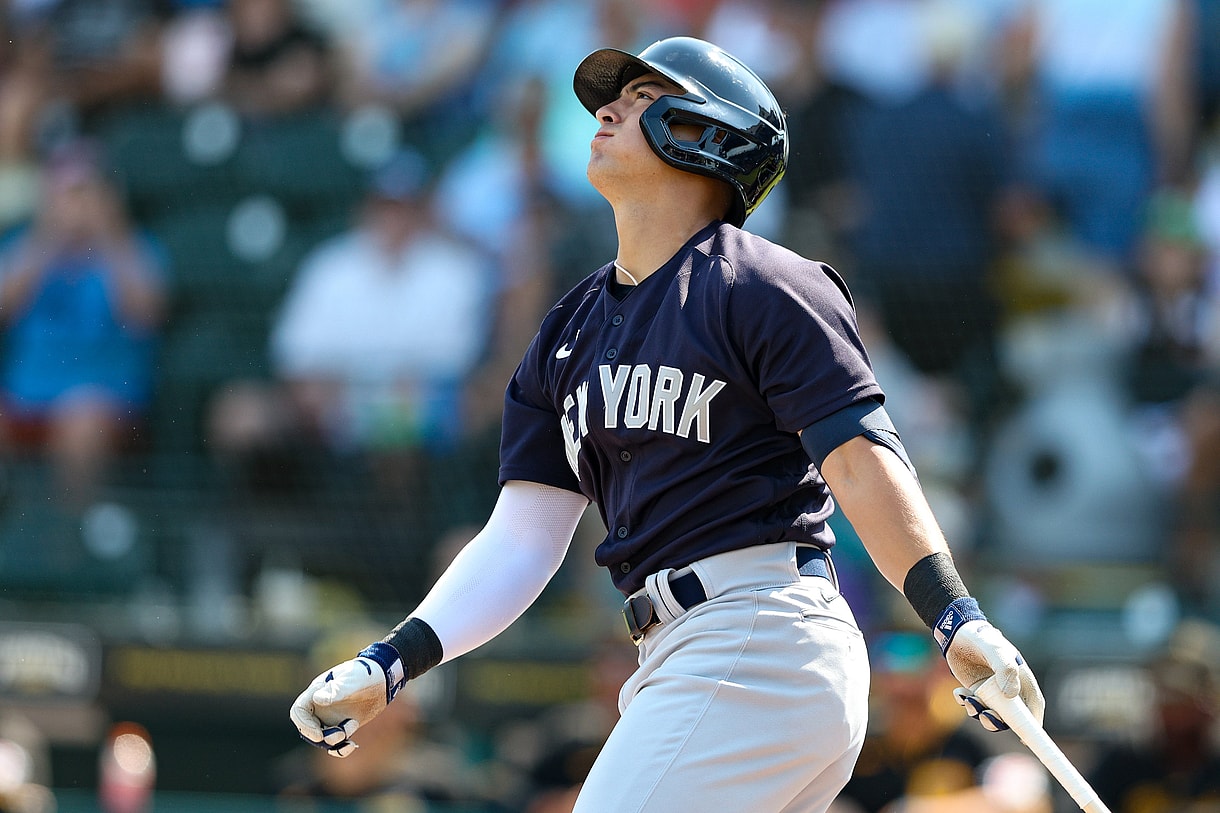
If Volpe can get you a 107 wRC+ with his stolen base output and defense, you’re looking at one of the very best 2B in the game, and someone who can certainly be a perennial All-Star. Many have reservations about setting lofty expectations for a prospect, and I would agree with that thought process, but I also think Volpe’s tools set a decently high floor for him. He’s already a great defender at 2B and has incredible speed, things that don’t change between MiLB and MLB. This rings even more true with the bigger bases and new pickoff rules making their way to the Majors this year.
Assuming Volpe is able to start from Opening Day to the end of the season, he could give you 3 WAR without being a spectacular offensive player, creating the high-floor outcome the Yankees should desire. As for the upside? If he can have a .250-.260 BA with his plate discipline, we could be looking at a .350-.360 OBP with power and a 120 wRC+ with that defense and baserunning could be bordering on a 6 WAR season. It’s a lot to ask from someone who’s yet to acclimate their game to the Triple-A level, but is a 110 wRC+ too much to ask?
Yankee Stadium could also play well for opposite-field flyballs that may not get out at other ballparks, and plenty of AL East ballparks provide high-scoring environments for Volpe to thrive in. Add on the fact that Volpe hit breaking pitches well at the MiLB level last season, and he could end up putting up solid numbers for a player that’s far from finished in his development. The offensive talent is there, and the Yankees could end up with a dynamic young infielder who pushes them over the top in the postseason.
While this isn’t something that matters much in terms of projectability or production, it does mean something that Willie Randolph (who also pushed for Derek Jeter to start in 1996) sees Anthony Volpe as someone who has the “it” factor. Randolph described how most young players carry a “superficial” confidence to their game, one that fades under pressure and in environments (like New York) where the fans are ruthless and the expectations are sky-high. Randolph was a former captain of the Yankees and has a highly respected voice in the organization.
Aaron Judge has voiced his approval for Volpe as well, which is rare considering that he usually avoids making strong statements in general. When asked about Anthony Volpe, Judge made it abundantly clear that the Yankees shouldn’t get hung up on his age or experience at the MiLB level:
“My thing has always been, if you’re the best player, it shouldn’t matter your age. You should be up helping the New York Yankees.”
– Aaron Judge
Approval from extremely important people around the organization is something that can only help Volpe’s chances at making the Major League roster, even if he isn’t playing shortstop primarily. Whether it’s the speed, the contact, the plate discipline, the power, or the glove, Volpe is an extremely talented player who is more than capable of becoming a great player. That being said, do the Yankees even have room to roster Volpe on Opening Day?
The Case Against Rostering Anthony Volpe on Opening Day
Gleyber Torres presents a massive hurdle for Anthony Volpe to leap over, and that’s not because the Yankees are being “stupid”, but rather because Torres is a really good 2B still. He’s coming off of a 115 wRC+ and 24 HRs last season with good defense at 2B, and the Yankees are going to need his bat in the lineup. According to Steamer, Torres is projected to be one of the four best hitters on the Yankees, so is trading your 4th best hitter to start a rookie who may not be Major League ready the right move?
One could argue that if the Yankees are so confident in Volpe that they’re trading Torres it means he is MLB-ready, but you can’t have 100% certainty until we have a meaningful MLB sample size. This isn’t a diss on Anthony Volpe, who I’ve already stated has remarkable skills, but he should play alongside Torres, not above Torres. The Yankees could theoretically play Anthony Volpe at 3B over Josh Donaldson, but it’s clear that they want to at least know what they have in the former MVP before they move on from him. As unpopular as Donaldson is, figuring out what you have with him is the right way to handle things.
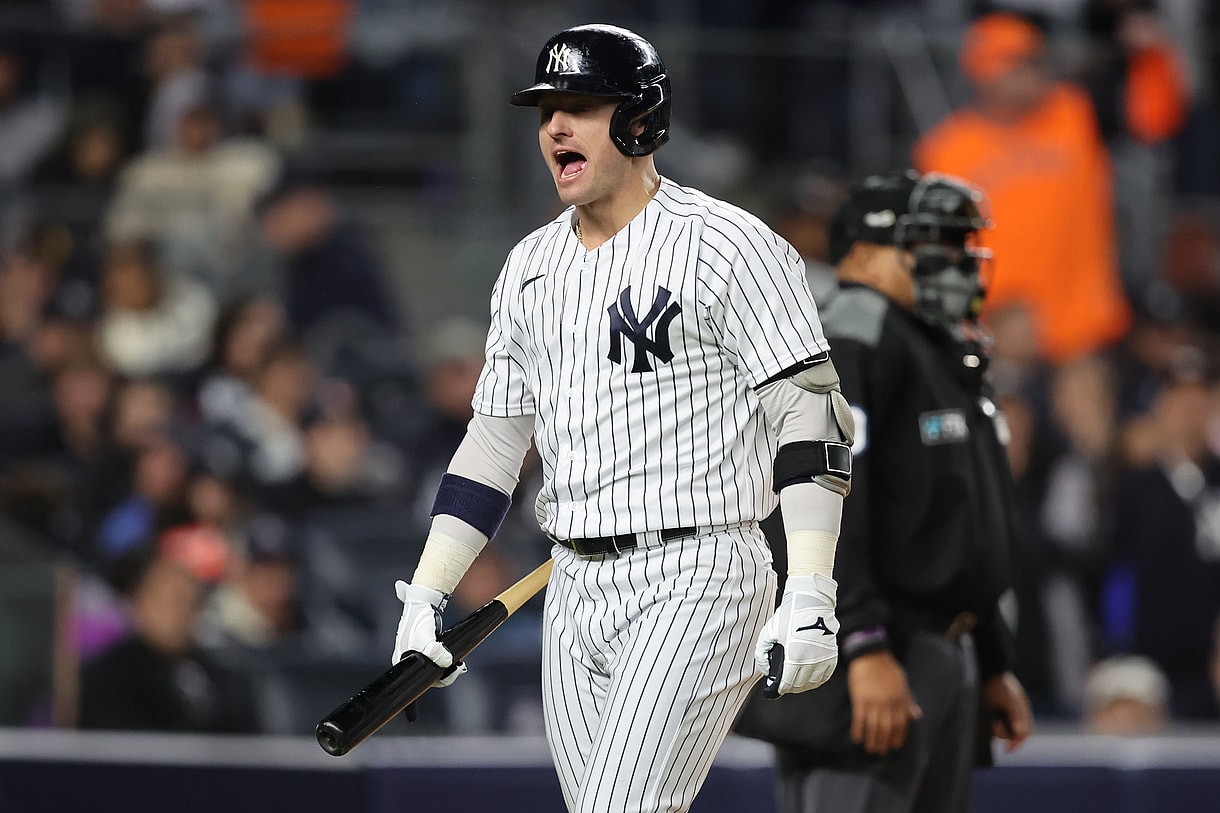
People may view it as Brian Cashman refusing to admit when he’s wrong, but there are projections that suggest there’s more left in the tank for Donaldson. He at least gives them strong defense at the position, and if he’s to struggle then it creates an avenue for Volpe to start. More importantly, it also gives Volpe more time at Triple-A to develop and give the Yankees added confidence in his game, though that may not be as appealing as giving Volpe the job similarly to how Jeter won it in 1996. Anthony Volpe is trying to be the best version of himself and create his own legacy; not mirror the one left behind by Derek Jeter.
As enticing as it may be to see Anthony Volpe take the field on Opening Day for the 2023 Yankees, it might not be the safest or most rewarding decision for the team. This isn’t even mentioning that DJ LeMahieu would likely be the successor to Donaldson at 3B if Donaldson were to falter. LeMahieu posted a 116 wRC+ last year while battling toe issues, and he posted a wRC+ over 130 prior to that injury. He’s an elite defender at 3B, and even if he mirrors his offensive production from last season, it’ll be hard for Anthony Volpe to be better than that in his first season playing a position he hasn’t spent much time working at.
Say what you want about Josh Donaldson, but Torres and LeMahieu are both good players who provide strong production at 2B/3B, which leaves shortstop as the final position to discuss. Oswald Peraza has not been great in Spring Training offensively, but he’s battled a leg injury that caused him to miss a couple of games, and he’s still working plenty of walks and putting the ball in play, which the Yankees view as a positive. The quality of contact will come around for Peraza, and even if he’s nothing more than a 100 wRC+ bat, he’s a gold glove caliber defender at the position with elite baserunning as well.
I talked about how high Volpe’s floor was, but Peraza’s floor is extremely high as well. His glove and baserunning should allow him to put up plenty of value even if he’s a 90-95 wRC+ bat, which would place him around a 3 WAR player as well. It’s easy to compare him to the reigning AL Gold Glove winner Jeremy Peña, who posted a near-average wRC+ but was so good defensively and as a baserunner that he was a 3-4 WAR shortstop in under 140 games. If Peraza struggles, this could be the avenue for Volpe to get a starting job as well, but I don’t anticipate that’s going to happen prior to Opening Day.
The Yankees love Peraza, and ESPN’s Buster Olney reported that it looks like he’ll be the starting shortstop on Opening Day. It’s not impossible for Volpe to win the SS battle, but it does seem highly improbable. Trading Isiah Kiner-Falefa doesn’t have much of an effect on this either, since Volpe won’t be (and shouldn’t be) called up just to serve a pinch-running and utility infield role. In terms of logistics, it’s going to take a miracle for Volpe to make this roster, and that’s why I lean towards not rostering him on Opening Day.
This isn’t about Volpe’s preparedness but rather the state of the New York Yankees at the Major League level. They’re a World Series contender; they can’t decide on a whim to take a massive risk, such as trading Gleyber Torres or Oswald Peraza unless it’s an offer they can’t refuse. They currently have a strong roster in place, and using Volpe as the backup plan instead of the primary plan places far less pressure on Volpe to succeed. Betting on a 21-year-old shortstop who has just 22 games of Triple-A experience to put up a 115-120 wRC+ seems irresponsible, and Brian Cashman knows this.
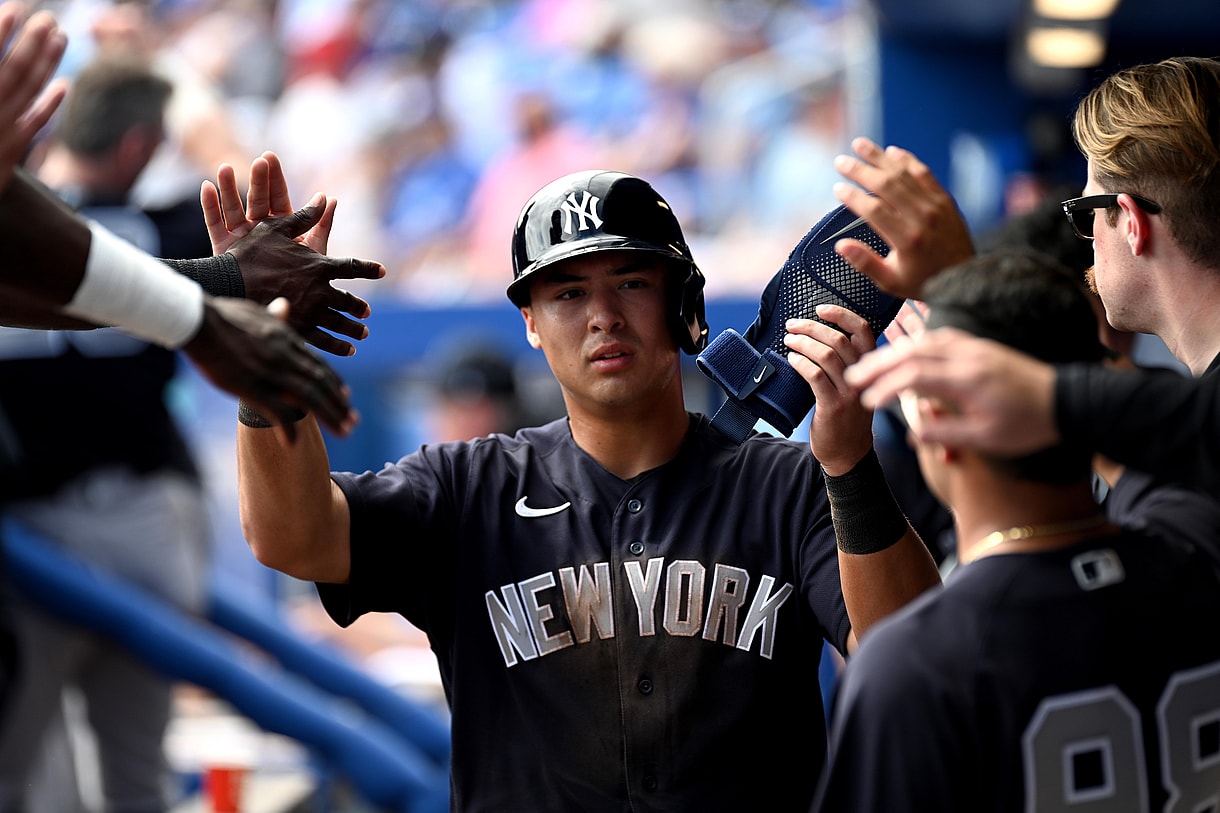
Is Volpe talented? Absolutely. Does that mean the Yankees should trade other key contributors to start him? Absolutely not. Allowing the season to play out is the wiser decision on paper, but what’s the final verdict on this matter?
What Should the Yankees Do?
Trading one of Peraza or Torres would be a foolish decision unless they were able to get a player in return with plenty of control who could help them at a position for need. For example, if the Yankees were able to flip one of Torres or Peraza for an impact starter or left-handed bat, you could live with the potential “downgrade” offensively you’d have from Torres to Volpe or the defensive downgrade from Peraza to Volpe. With that being said, does that impact piece really exist for the Yankees? The issue at hand is that there aren’t many teams in need of a 2B/SS that have an outfielder with a similar trade value to Peraza or Torres.
Anthony Santander has had an excellent showing in the World Baseball Classic and is coming off of a season with a 120 wRC+ and 33 HRs as a switch-hitting corner outfielder, but would the Orioles want to make an in-division trade? Torres would suffer from the deep wall out in LF at Camden Yards, with Statcast’s Expected HR claiming that he would’ve hit three fewer HRs if he played all of his games at Camden Yards. Perhaps Torres is still able to provide a 115-120 wRC+ on strong defense, but what do they do with Ramón Urías?
This would be the most realistic trade I could see going down, especially considering that Torres and Santander have similar service time remaining, and the Orioles have some young bats in their outfield coming up. Kyle Stowers could take over the far easier RF in Camden Yards, and it could open up roster spots for some younger players to take a larger role.
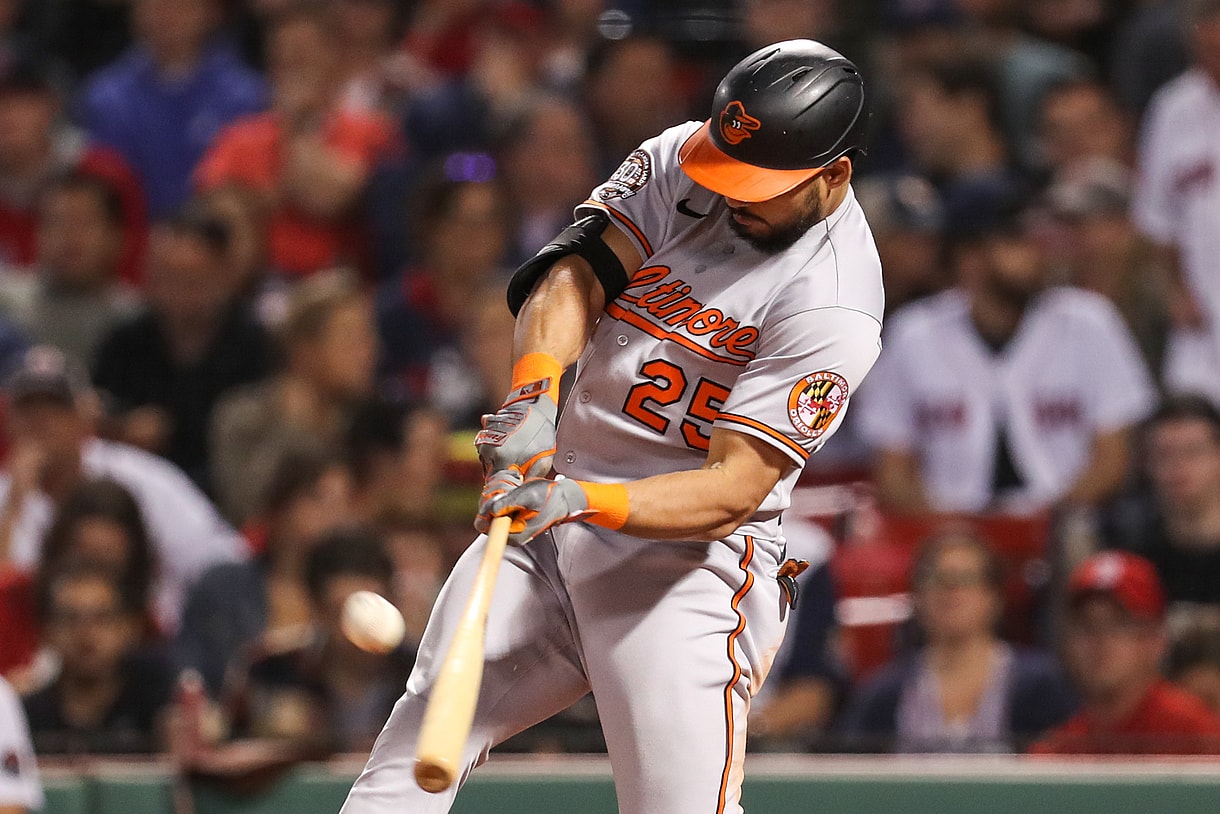
Kyle Stowers could slot in as the RF, Urias could get more reps at DH, and Joey Ortiz/Colten Cowser could take over for Jorge Mateo and Austin Hays mid-season, with Torres at 2B. If we look at what a potential lineup for the Orioles could look like after moving Santander and acquiring Torres, it looks extremely promising:
- Cedric Mullins CF
- Adley Rustchman C
- Gunnar Henderson 3B
- Gleyber Torres 2B
- Ryan Mountcastle 1B
- Kyle Stowers RF
- Colton Cowser CF
- Joey Ortiz SS
- Austin Hays LF
Torres could be easier to extend as well than Santander, as he’s two years younger and plays a much more valuable position. The issue with this is that it’s hypothetical, and plenty of liberties have to be taken to consider this a realistic outcome. If the Yankees don’t find a trade for Torres that gives them a power bat in the outfield, why trade him right now? The same goes for Peraza, who could get dealt for an SP from the Marlins, but if the reports on Carlos Rodon’s injury are accurate, they won’t have much time without him. This creates a roster problem for German, who is out of MiLB options.
We also don’t know Peraza’s ceiling, as he’s just 22 years old and has shown incredible defensive IQ and skills at a premier position. It’s possible he could be a 110 wRC+ bat with gold glove defense, which could make him a top-50 position player. Is that worth trading for a starter who would most likely not get a start in the postseason with Cole, Rodon, Cortes, Severino, and perhaps one of Schmidt/German/Montas outperforming them?

The final verdict on the Anthony Volpe decision for me is complicated, but I lean towards keeping him at Triple-A for Opening Day. If the Yankees can flip one of their starting infielders for an outfielder who can provide them with serious power, then the growing pains that come with starting a rookie won’t affect their win total too much. The Yankees essentially have to figure out a way to improve their outfield while clearing room for Volpe, and I imagine Cashman is currently working the phones right now to try to do such a thing.
If the Yankees do not find a deal that they deem worthy of pulling the trigger on, then starting Torres at 2B and Peraza at SS is the logical decision. They have more MLB experience, are more polished as ballplayers, and present a higher floor than Volpe currently can. It’s not a knock on Volpe, it’s just the best decision for both parties right now. Volpe’s been more than impressive this Spring, and perhaps continued success for him could change my mind, but I think the careful approach with Volpe is the one that’ll yield the best results for this team long-term.
More about: New York Yankees